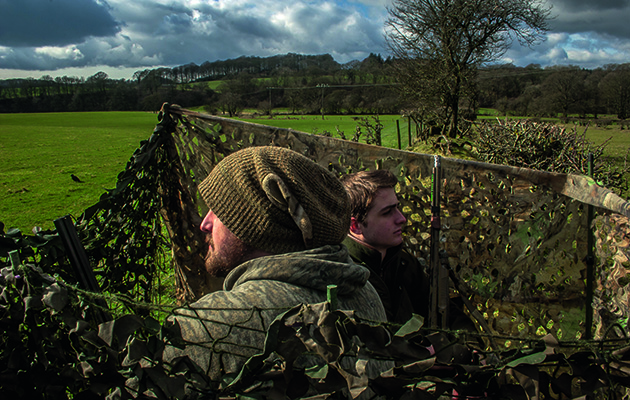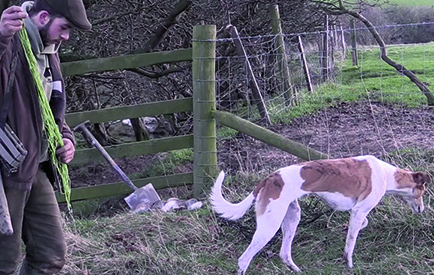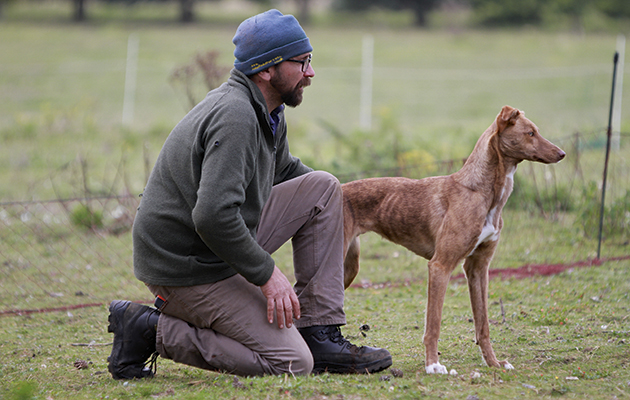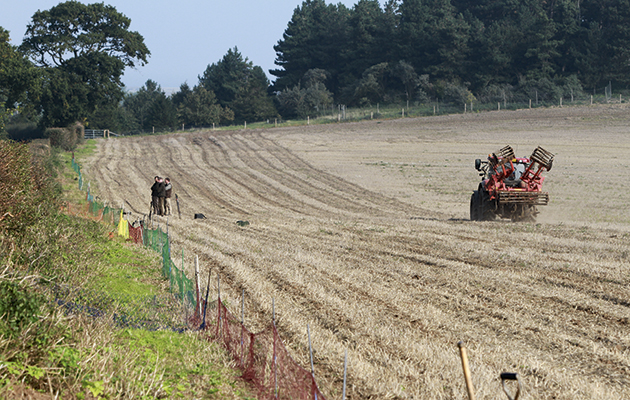Ferreting with traps
Feeling that my resources were stretched, I needed a method of control that worked while I was elsewhere, as I can only be in one place at any moment in time. This was a job for my two favoured traps — the cage trap and the rabbit drop box. With these ancient methods, I could keep the pressure on the rabbits even when I was asleep.
However, I needed to dig in some more drop boxes on a newly erected fence line, where the rabbits were savaging the emerging sugar beet. To the unaccustomed a rabbit drop box is a contemporary interpretation of the “tip trap” utilised by the warreners of the 1800s on their sprawling warrens on the Brecks of East Anglia. This feat of ingenuity is now invaluable to, not only myself, but any rabbit catcher. It consists of a holding chamber dug into the ground with a mesh floor and a tunnel with a counter-balanced false floor that tips and resets itself when set. You place these traps along rabbit fencing, and the tunnel presents the rabbit with what looks appealing — a passage of no resistance to and from their feeding grounds. Once the rabbits are accustomed to travelling through the tunnel, the counterbalance is removed, thus setting the trap. Over the course of a day/night this discreet method will resolve those public outcry that always arise due to their location and environment. From conservation areas, nature reserves to public rights of way, rabbits can be harvested without anyone knowing anything different.
Simple, yet effective
As many of you will have experienced, fencing alone will not solve your problems, especially if you happen to manage the surrounding fields. It only delays the inevitable of rabbits chewing a hole through the fence, or, worse still, the “toothpaste” effect, where rabbits are squeezed down a passage onto another source of food. There are several differing versions, but I use the Leader rabbit trap from Scotland, a tried and tested operational and long-lasting trap that has the potential efficiency to render itself redundant within 12 months! On most sites though, it keeps the rabbit numbers down to a manageable and realistic level for decades, dependent of course on the size of the surrounding rabbit reservoirs. The simplicity and beauty of this trap is that the rabbits are led into a false sense of security. Nothing visibly or physically alters but then when set, the clank signals another victim of this timeless yet very effective piece of engineering. For these rabbits, the grass wasn’t greener on the other side.
A nocturnal solution
I really like these methods that are effective when I am asleep. The childlike anticipation when going to empty them out never deserts me. Experience has taught me to empty them with an air of caution, as I have nearly been bitten by stoats, mauled by squirrels and gnawed at by rats. Working off a tunnel system, they have the ability to catch anything that passes through them, but with this trap and the cage trap, any non-target species can be liberated, unharmed and none the worse for their experience but these traps do need a rabbit fence in order to be at their most efficient. Cage traps on the other hand can be used anywhere as long as the two-legged fox doesn’t interfere with them.











